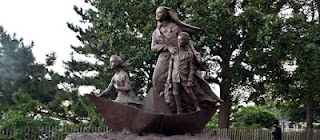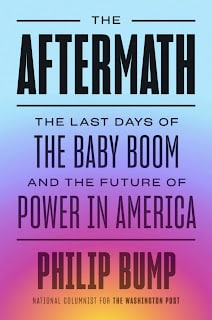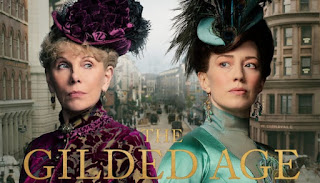One consequence of the Sunday-centric character of the contemporary liturgical calendar is that we missed yesterday what should be a celebration of major importance and relevance for Catholics in the United States, the commemoration of Saint Frances Xavier Cabrini (1850-1917), the patroness of immigrants and migrants.
Born in Italy, she founded the Missionary Sisters of the Sacred Heart in 1880, of which she remained Superior General until her death. When she asked Pope Leo XIII’s approval to establish a mission in China, he advised her to go « not to the east, but to the west » – to the United States to serve the immense needs of the hordes of poor Italian immigrants who were then flooding the cities of the United States. So she and six other sisters came to New York. Like so many of the Italian immigrants, she was less than enthusiastically received at first by the Irish-Catholic establishment – in particular in her case, by New York’s Archbishop Michael Corrigan. But she persisted in her mission and over time founded some 67 institutions in major cities in the United States and in South America. In their day, those institutions served Italian and other immigrants and made a notable impact in their communities. Having become an American citizen herself in 1909 (thus, in effect, experiencing the fullness of the American immigrant experience), she became the first naturalized American citizen to be canonized in 1946.
The days of those once so successful Catholic institutions such as she established are now gone, but the need for structured outreach within immigrant communities as an explicit expression of the Church’s commitment to social solidarity remains central to the Church’s life and work in the United States – now as it always has been, and now maybe more than ever. Not unlike our attitudes toward the accumulation of wealth, our response to the immigrants among us is a profoundly spiritual and moral matter – a fundamental affirmation (or not) of the demands of solidarity.
Mother Cabrini died in Chicago on December 22, 1917, and is buried where her American mission began, here in New York, in a shrine on Fort Washington Avenue between Fort Tryon Park and West 190th Street in northern Manhattan. Italian-born Mother Cabrini (as she was known in life and is still referred to now as a saint) had special significance for my grandmother, who made sure we went to visit her shrine yearly to venerate her body (exposed under the altar). In those days, Mother Cabrini’s body was still enshrined in the old convent chapel, before being moved to the current shrine church around 1960. It was always a treat to visit the shrine, not least because of its magnificent location in Washington Heights, the highest part of Manhattan overlooking the Hudson River, a mile or so north of the George Washington Bridge. But, while we took in the sights and enjoyed being in the beautiful park (home also to the world-famous medieval art museum, The Cloisters), my grandmother made certain that we visited the chapel, honoring the great Italian patron of immigrants to the New World.
For decades now, the Washington Heights neighborhood, where her shrine remains, has been the New York home for many Latino immigrants, primarily from the Dominican Republic. Sadly Mother Cabrini High School, which had long continued Mother Cabrini’s commitment to serve the immigrant community, has since closed, as have so many Catholic schools.
Even so, the reasons to elevate and celebrate her memory seem all the more relevant today. It is a shame to have missed her celebration this year because of Sunday. Perhaps, instead, her feast should always be kept on a Sunday in this country, so that her sanctity and relevance may be adequately highlighted as they ought to be.




